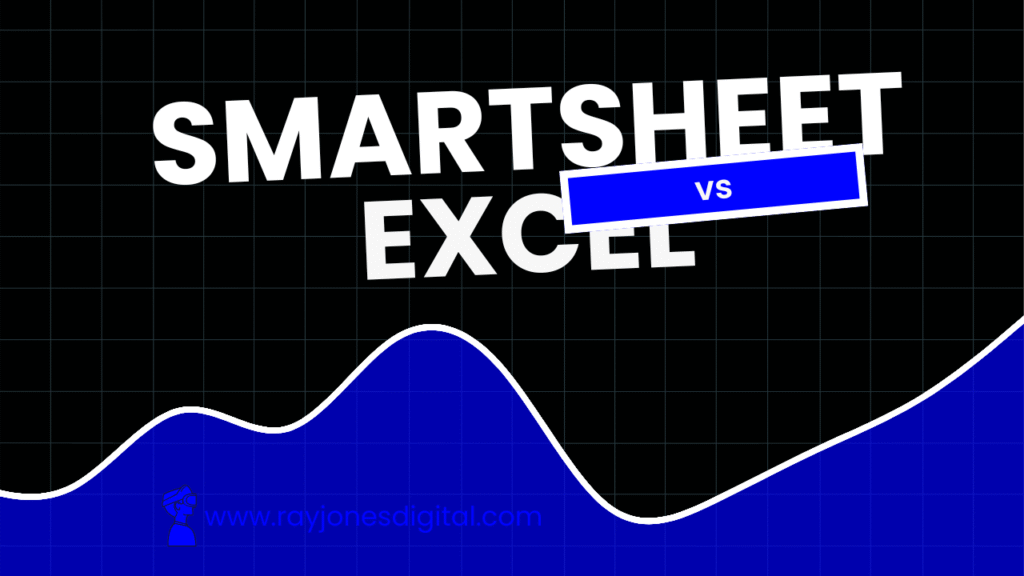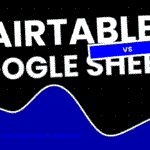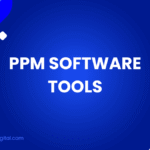
Choosing the right spreadsheet and project management tool can make or break your team’s productivity. Both Smartsheet and Excel have carved out significant niches in the business world, but they serve different purposes and excel in different areas.
Excel has been the go-to spreadsheet application for decades, offering powerful data analysis capabilities and familiar functionality. Smartsheet, on the other hand, positions itself as a work management platform that combines spreadsheet familiarity with project management features. Understanding the strengths and limitations of each tool will help you make an informed decision for your organisation.
This comprehensive comparison will examine the key differences between Smartsheet and Excel, covering everything from basic functionality to advanced features, pricing, and real-world applications.
Understanding the Fundamentals
What is Excel?
Microsoft Excel is a spreadsheet application that forms part of the Microsoft Office suite. Since its launch in 1985, Excel has become synonymous with data analysis, financial modelling, and complex calculations. The software offers a grid-based interface where users can input data, create formulas, and generate charts and graphs.
Excel’s strength lies in its mathematical capabilities and data manipulation features. It supports advanced functions, pivot tables, macros, and Visual Basic for Applications (VBA) programming. The software handles large datasets efficiently and provides sophisticated analytical tools for business intelligence.
What is Smartsheet?
Smartsheet is a cloud-based work management platform that combines spreadsheet functionality with project management tools. Launched in 2006, it bridges the gap between traditional spreadsheets and dedicated project management software.
The platform offers familiar spreadsheet-style interfaces alongside Gantt charts, card views, and calendar displays. Smartsheet focuses on collaboration, workflow automation, and project tracking rather than complex data analysis. It’s designed to help teams manage projects, track progress, and streamline business processes.
Feature Comparison
Data Management and Analysis
Excel excels in data management and analysis capabilities. It can handle millions of rows of data and provides sophisticated tools for statistical analysis, financial modelling, and data visualisation. The software supports complex formulas, array functions, and advanced features like Power Query and Power Pivot for business intelligence.
Smartsheet offers basic spreadsheet functionality but lacks Excel’s advanced analytical capabilities. It can perform simple calculations and basic data manipulation, but it’s not designed for complex statistical analysis or large-scale data processing. The platform’s strength lies in organising and tracking project-related data rather than deep analysis.
Collaboration and Sharing
Smartsheet was built with collaboration in mind. Multiple users can work simultaneously on the same sheet, leave comments, and receive real-time notifications about changes. The platform offers granular permission settings, allowing administrators to control who can view, edit, or share specific content.
Excel’s collaboration features have improved significantly with Office 365, but they still lag behind Smartsheet’s capabilities. While Excel Online allows real-time collaboration, the desktop version requires careful file management to avoid conflicts. Sharing options are more limited, and the commenting system is less intuitive than Smartsheet’s approach.
Project Management Tools
Smartsheet shines in project management functionality. It offers built-in Gantt charts, automated workflows, task dependencies, and resource management tools. Users can create project timelines, assign tasks, track progress, and generate status reports without additional software.
Excel requires manual setup and maintenance for project management tasks. While it’s possible to create Gantt charts and project timelines in Excel, these features require significant effort to implement and maintain. Excel lacks automated workflow capabilities and real-time project tracking features that come standard with Smartsheet.
Automation and Workflows
Smartsheet provides user-friendly automation features that don’t require programming knowledge. Users can set up automated alerts, approval workflows, and data updates using a visual interface. The platform integrates with popular business applications to create seamless workflows.
Excel offers powerful automation through macros and VBA programming, but these features require technical expertise to implement. While Excel’s automation capabilities are more flexible and powerful, they’re less accessible to average users. The software also lacks the built-in workflow management features that Smartsheet provides.
User Experience and Interface
Learning Curve
Excel has a steep learning curve, particularly for advanced features. While basic spreadsheet functions are intuitive, mastering Excel’s full potential requires significant time investment. The software’s extensive feature set can overwhelm new users, and finding specific functions often requires navigating complex menus.
Smartsheet is designed to be more user-friendly, especially for project management tasks. The interface is cleaner and more modern, with intuitive icons and workflows. However, users familiar with Excel may need time to adapt to Smartsheet’s different approach to data organisation and manipulation.
Customisation Options
Excel offers extensive customisation options through formatting, conditional formatting, and custom functions. Users can create sophisticated dashboards and reports tailored to specific needs. The software’s flexibility allows for creative solutions to complex business problems.
Smartsheet provides good customisation options for project management but lacks Excel’s depth in data presentation. The platform offers templates, custom fields, and branding options, but it’s more structured in its approach. Users have less freedom to create completely custom solutions.
Pricing and Value
Excel Pricing
Excel is available through several licensing models. Microsoft 365 Business Basic starts at £4.20 per user per month, while Business Standard costs £10.50 per user per month. Enterprise plans offer additional features and security options. One-time purchases of Office 2021 are also available for organisations preferring traditional licensing.
The pricing includes access to other Microsoft Office applications, making it excellent value for organisations already using the Microsoft ecosystem. However, advanced features like Power BI may require additional licensing costs.
Smartsheet Pricing
Smartsheet operates on a subscription model with several tiers. The Individual plan costs $14 per month for single users, while the Business plan starts at $25 per user per month. Enterprise plans offer additional security and administrative features at higher price points.
Smartsheet’s pricing is higher than Excel’s, but it includes project management features that would require additional software purchases with Excel. The platform’s value proposition depends on whether organisations need dedicated project management capabilities.
Integration Capabilities
Excel Integrations
Excel integrates seamlessly with other Microsoft Office applications and supports numerous third-party add-ins. The software can connect to various data sources, including databases, web services, and cloud platforms. Power Query enables sophisticated data imports and transformations from multiple sources.
The Microsoft ecosystem provides excellent integration opportunities, particularly for organisations using Teams, SharePoint, and other Microsoft services. However, integrating with non-Microsoft platforms may require additional development work.
Smartsheet Integrations
Smartsheet offers extensive integration capabilities with popular business applications. The platform connects with tools like Slack, Google Workspace, Salesforce, and Adobe Creative Cloud. Pre-built connectors and APIs enable seamless data flow between systems.
The platform’s integration approach is more user-friendly than Excel’s, requiring less technical expertise to implement. However, the available integrations are more limited in scope compared to Excel’s extensive ecosystem.
Use Case Scenarios
When to Choose Excel
Excel is the better choice for organisations requiring sophisticated data analysis, financial modelling, or complex calculations. It’s ideal for:
- Financial planning and analysis
- Statistical analysis and research
- Large-scale data processing
- Custom dashboard creation
- Scientific and engineering calculations
Excel works well for organisations with existing Microsoft Office investments or those requiring offline functionality. Teams with advanced Excel skills can leverage the software’s full potential for complex business problems.
When to Choose Smartsheet
Smartsheet is more suitable for project management, team collaboration, and workflow automation. It’s the better choice for:
- Project planning and tracking
- Team collaboration and communication
- Workflow automation and approval processes
- Resource management and scheduling
- Portfolio management and reporting
Smartsheet works well for organisations prioritising ease of use and collaboration over advanced analytical capabilities. It’s particularly valuable for teams managing multiple projects simultaneously.
Making the Right Choice for Your Organisation
The decision between Smartsheet and Excel depends on your organisation’s specific needs, existing technology stack, and user capabilities. Consider these factors when making your choice:
Budget and licensing: Excel may offer better value for organisations already using Microsoft Office, while Smartsheet’s pricing includes project management features that might require additional software with Excel.
Technical expertise: Excel requires more technical knowledge to maximise its potential, while Smartsheet is designed for broader user adoption.
Primary use case: Choose Excel for data analysis and complex calculations, or Smartsheet for project management and collaboration.
Integration requirements: Consider your existing software ecosystem and integration needs when evaluating both platforms.
Finding Your Perfect Productivity Solution
Both Smartsheet and Excel serve important roles in modern business operations, but they excel in different areas. Excel remains the gold standard for data analysis, financial modelling, and complex calculations. Its powerful features and extensive customisation options make it invaluable for organisations requiring sophisticated analytical capabilities.
Smartsheet offers a more modern approach to work management, combining spreadsheet familiarity with project management functionality. Its collaboration features and workflow automation capabilities make it ideal for teams managing projects and processes.
Consider running pilot programmes with both platforms to evaluate their fit within your organisation. Many businesses find value in using both tools for different purposes, leveraging Excel’s analytical power alongside Smartsheet’s project management capabilities.
The key is matching the tool to your specific needs rather than choosing based on popularity or familiarity. Take time to assess your requirements, evaluate your team’s capabilities, and consider long-term scalability when making your decision.

I am Ray Jones Digital
My current occupations: a Digital Marketer, Local SEO expert, Link Builder, and WordPress SEO specialist. Shopify SEO, Ecommerce Store Management, and HTML & WordPress Developer I have been practicing the above mentioned services for more than 10 years now As an SEO expert working with your ongoing projects.



